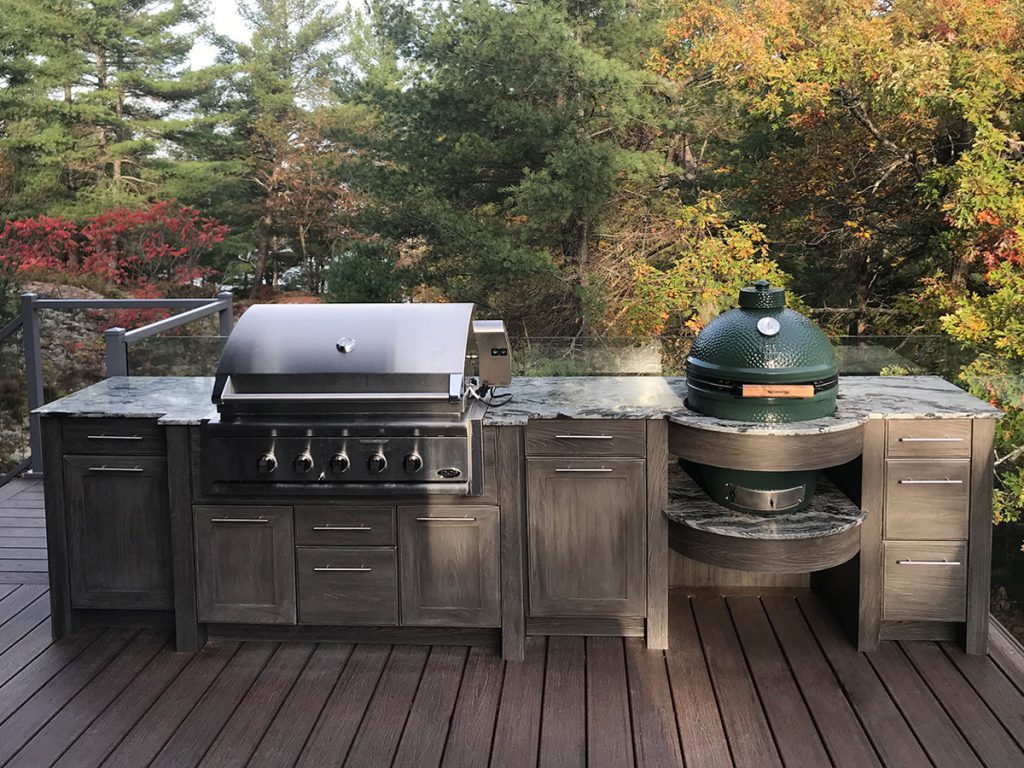Wood vs. Composite Decking: 3 Factors to Guide Your Decision
As the weather starts to warm up and the nor’easters call it quits, it’s time to think about spring and summer projects. If you have your eye on enjoying the great outdoors this season, nothing is better than a well-designed deck to add value to your house and create a transition between indoor and outdoor living.
So what kind of deck should you build? Your biggest decision is about the materials. Wood decking is exactly what it sounds like, but you can choose from two major types. First is pressure-treated lumber, which is inexpensive Southern Yellow Pine boards that are chemically treated to resist mold, rot and insect damage. The other choices are redwood or cedar, which naturally have the properties that pressure-treating gives to pine.
The other best wood for outdoor deck building isn’t wood at all, but rather a manufactured combination of wood and recycled plastic. Composite decking is made by mixing these materials and pressing them into molds to create perfect boards that have a very even appearance. Because they are made with a considerable amount of plastic, composite boards will not rot or suffer from insect damage.
Each type of decking material has its particular advantages and disadvantages, so you’ll need to weigh them to make the best decision for your property. To do so, consider these three major features:
Durability
When it comes to durability, composite boards come out on top. They are dense and water-resistant, so they never warp, crack or split, meaning your deck will stay in great shape for many years. You also won’t have to worry about annual maintenance tasks like sanding and re-staining your deck — a quick hose-down is all it takes to keep it looking good. Though some homeowners complain that composite boards can become worn in high-traffic areas, denting and pitting are equally common in natural wood.
As for wood options, a cedar wood deck is generally more durable than a pressure-treated one, since pressure-treated pine is a soft wood that can more easily dent and splinter. Any type of wood will require yearly resealing and/or staining to maintain good color, so there’s built-in work to be done when you go this route.
Appearance
Opinions vary, but many people find the natural good looks of real wood to be far superior to the plastic, too-perfect look of composite decking. Composite boards are typically only available in a few colors, and the brown tones can come off as flat or fake looking. This is probably why a real wood deck adds more value to your home’s resale value than a composite one. According to Remodeling Magazine, you can expect to recoup 83 percent of the cost of a wood deck when you sell, but only 64 percent of a composite deck’s installation price — proof positive that most people value the look of wood over composite, even if they have to put in extra work to keep cedar and pressure-treated lumber at their best.
Cost
Pressure-treated lumber is by far the cheapest option, which makes it a perennially popular choice at the lumberyard. To have a pressure-treated pine deck installed, expect to pay between $15 and $25 per square foot. Pro tip: Spending a little more for kiln-dried lumber will keep splitting and checking to a minimum for better results. A redwood or cedar deck will cost between $25 and $30 per square foot.
Composite decking is the most expensive at $30 to $45 per square foot, but this is a one-time investment. With composite, you won’t need to purchase sealer or stain every year or two, which makes its price the final price.
The Bottom Line
Ultimately, your choice of deck materials will come down to your personal tastes, your budget and how much time you want to spend maintaining your deck. If you value maintenance-free living, spring for the composite decking. If you love the look of wood and don’t mind some annual work, get cedar. If keeping costs down is your primary goal, pressure-treated lumber is for you.

